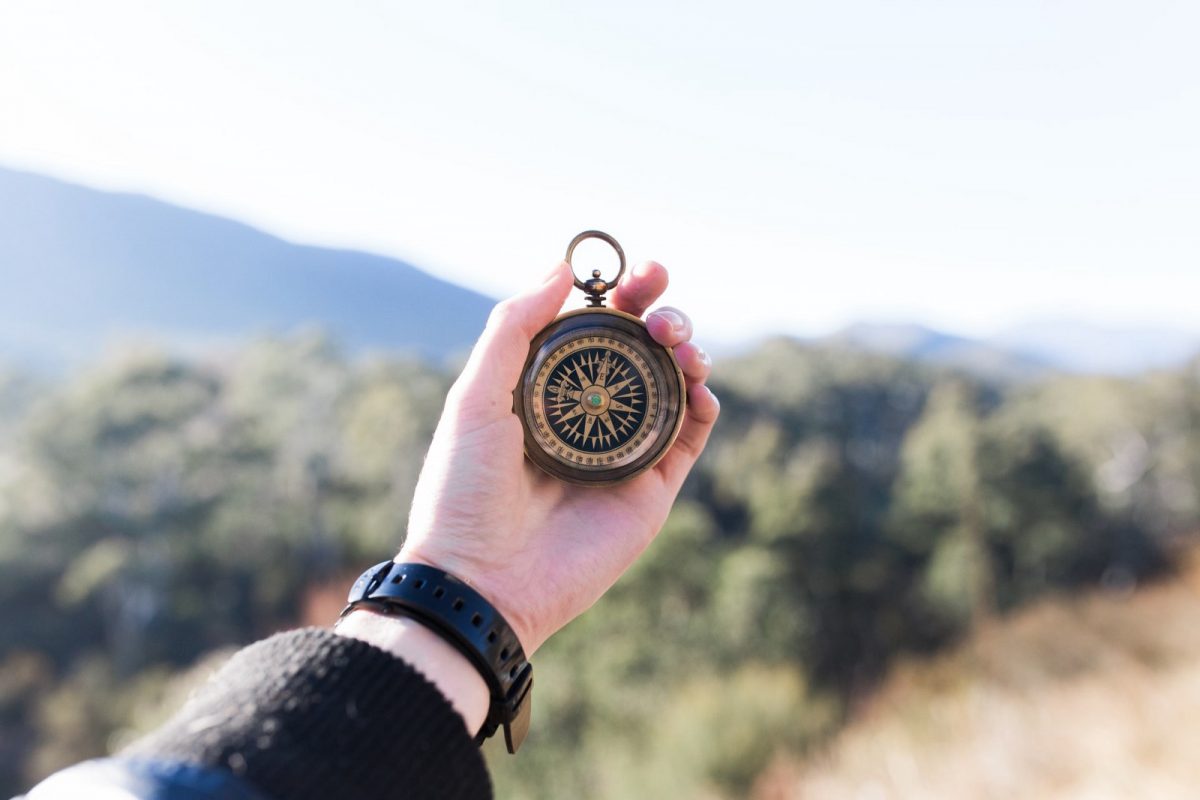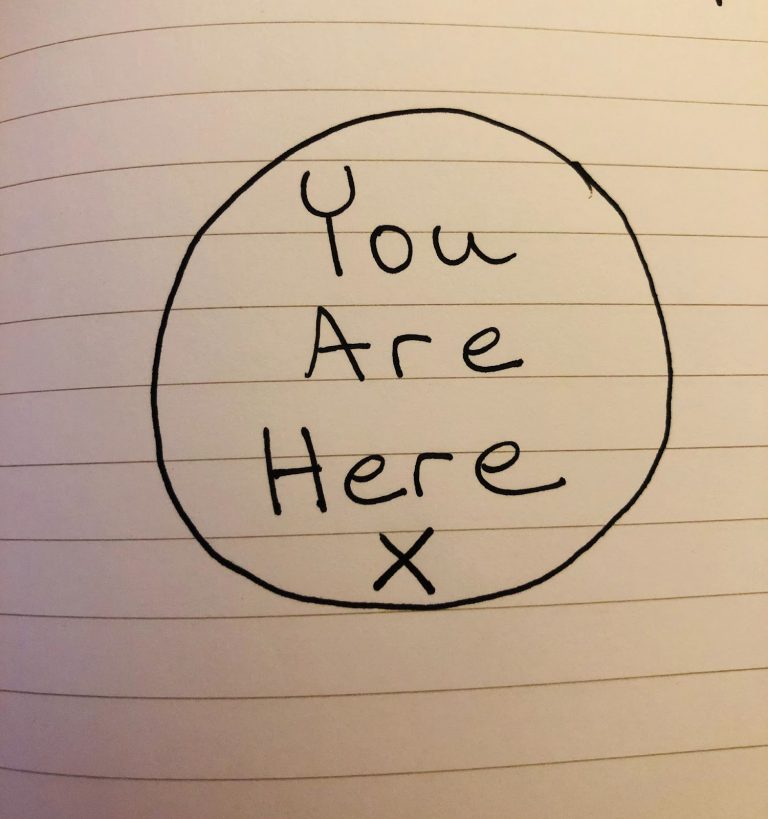
I don’t know you, but for me, reading self-development books has always been intensely frustrating.
One of my reasons was that for me, as a french woman, reading all those US authors their prose stuffed with superlatives was such a pain — I could also mention how inappropriate it felt to read calls to “god” and “jesus” all the time in there.
Another reason was that terrible lack of context. Basically, all these books were just about succintly transcribing the authors’ “recipe for success”, packing it with loads of bullshit and so-called examples, and claiming over and over again “that’s what made me successful and you can be too” until you, the reader, are as convinced as they are that this can work.
As the(ir) liberal saying goes: you are responsible for what happens to you. Aren’t you?
Despite my grining when reading these piles of empty “advice”, I still gave them the benefit of the doubt. After all, I was trying to improve my burn-outing not-statisfying-life, wasn’t I? And they did manage to do so, right?
So I did a fair bit of trying to apply their recipes. Of course, in the first few weeks — or days — my renewed motivation for survival carried me through these more or less sane rituals. I sometimes even reached a point were I could feel things shifting. Until the day I couldn’t get up and clown around — or just went back home completely done in after yet one more crazy day at work.
Yeah, that work I hated but couldn’t just quit because, you know, I had to pay for having a roof over my head and buy food (and water) to keep myself (and family) alive. Pretty sure you already went through that too!
When I finally bumped into the concept of zone 00 design, it shed a brand new light onto how I could make actual long lasting changes to my life. Taking my very personal context into account. Using my own limits and resources to craft my unique master plan. With no “god” or “jesus” thingy there. No burying you under piles of “social proof”. Just thinking and observing. No kidding.
Should I actually write how excited I was -and still am- around that topic?
In case you are not accointed with the terms, “zone 00” comes from permaculture. In permaculture, zoning is usually used in the context of landscaping. Starting with the dwelling as zone 0 towards “the wild” in zone 5, components of the design are placed within zones based on the frequency at which they are used/need maintenance and their beneficial relationships together.
As for zone 00 design, it aims at managing our inner landscape so that we become capable of inhabiting our environments in a restorative (or, at the very least, non-destructive) way. And that inner landscaping work digs into relationships, emotions, health, mind, spirituality, politics… whatever you may need to function well.
Following a structured design process and using permaculture ecological principles and ethics, zone 00 design takes you through a thrilling adventure of learning how to better observe yourself, your limits, resources, patterns and everything that surrounds you, so that you can put things in beneficial relationships together and help yourself out of being so miserable — or anything else you’re trying to change into your life. All of this using systemic thinking.
Yeah, I know, that’s far from just following a self-development guru’s “success story”!

So how can designing for your zone 00 help you solve your problems?
#1: it develops your self observation skills
In cultures (what’s usually called “Western” but I’d rather call them otherwise, because Western is soOo eurocentric) that push you to always “make the most” of your time, be permanently busy and do-do-do, it’s often hard to remember how to just be and observe.
But like when designing for a garden, a farm, a city or a non-profit, if you want your hard work to be useful, you have to spend quite a bit of time just watching to see and understand what happens and what’s already there.
So in order to make your inner landscape design efforts worthwhile, you have to train your self-observation skills: what do you eat? How do you feel? What do you do with your freetime? How do you sleep? How do you respond to change in habits? When do you feel most energetic?
Harvesting all this “data” will then help you see what is already working well, what needs improvements and what requires to be changed completely.
#2: by exploring & understanding your own patterns (and leveraging that knowledge to your advantage)
A significant part of studying permaculture is about learning to recognise, understand and leverage patterns in nature. Wherever we need permaculture -in the eurocentrically-called “West”-, we have been so deeply disconnected from natural patterns and for so long that we have a hard time identifying them, be them visual patterns or patterns in time and space. Which is pretty sad, because patterns are SO useful!
The same goes for ourselves — and I’m not just talking about our obvious cyclic biology as women! It might seem obvious to say, but you can’t change something that you don’t know exist.You can’t change a bad habit until you’ve spotted it and understood what triggers it.
Still, as obvious as it seems, how much time have you spent observing your own behavioural patterns lately? Have you been up to identifying how this bad habit you’d like to get rid of works? Can you identify your negative (and positive) thinking patterns? Relational patterns? Then, how could you tweak them, even just a little bit, to make them (more) beneficial? How could you break and drop that bad habit?
Yes, that’s also observation ; coupled with some basic systems thinking!
#3: by watching closely at the best way to fulfil your needs
As you might have guessed, we all have needs. A diversity of needs. And I’m not talking about this irrelevant pyramid you’ve most likely heard about. I’m talking about real life needs, fluctuating, overlapping, complex. That’s something most of us never really think about until we are given the opportunity — which is what we’re doing just now.
What actually are our needs? Which of them are we not meeting? And even more important, how do we satisfy them? How do we consider the process of satisfying these needs? With very little agency left with how we use our “available-brain-time”, we rarely have the opportunity to question these one-fits-all “solutions to our problems” marketing keeps feeding us with and keep doing the same things over and over again, wondering why we still feel so dissatisfied — or just really bad!
Actively designing for your inner landscape really engages you to stop and acknowledge your needs and find the best ways to fulfil them — maybe spending some time with a friend would work better in your situation than yet another bar of chocolate? Or changing friends work better than drinking so much alcohol “to have fun”?
#4: it creates an anchor point to go back to regularly in your life (and evolve together with your context)
Yeah, I know, I’m a lot about context. But really, you too should take context seriously. I mean, context is everything. Really everything. And it is permanently evolving. Sometimes only in small proportion, so small that it’s difficult to notice anything has changed. And sometimes, the system you’ve been accustomed to is shocked from one state to another, and *pfffuit*, old context? Gone! How do you cope with that?
Some of us experience sudden and/or progressive changes more often than others — again, that’s context dependant. Having an anchor to come back to every once in a while such as your zone 00 design can provide you with a feeling of safety in the sense that whatever happens, you always know where to start with. Your basecamp is still there.
It can also help you realise how much your situation has changed even if progressively. And how not appropriate anymore to this sneaky new context all of your aging design is — obviously, increasing your exercise/commute time from 30′ a week to 2h/day requires that you adjust around that, and might explain why you felt so tired…

#5: it focuses on your place of most influence (and extends it)
We as humans — or most likely as “westerners”! — have this tendency to focus on what others should improve or should stop doing. You know that “if only people stopped being like this, the world would get better!”. Of course, there are things that all of us should stop doing — and there are lots of them!
However, you don’t change other people. Like really, you can’t. And even if you succeed in suppressing a problematic behaviour from someone by force, as soon as you stop exerting that force, this very behaviour comes back — and most likely even worse than before. Oh, and you end up exhausted. Pretty sad to waste so much energy for so little result, don’t you agree?
On the contrary, we have power over (though we’d probably better strive to switch to power with) ourselves, our habits, our thinking patterns, etc. We can make a comittment to changing ourselves.
And I’m not saying here that changing ourselves will change the world — I’m certainly not your “be the change you want to see in the world” person!
However, changing ourselves consciously gives us access to more resources. It makes us more resilient, stronger, confident. It increases, potentially, our leadership. Using this opportunity to focus on our place of most influence extends its edges and we become more and more capable of shifting what surrounds us — directly or indirectly.
Considering how much most of us battle to make long lasting changes into our lives — mostly out of lack of method and guidance if you ask me (and a will from “above” to keep us as servile as possible, but that’s another topic)-, how impacting do you think it makes you in the eyes of others, when you succeed at this?
#6: by establishing clear goals and vision for yourself
Establishing goals and vision for yourself is quite an interesting exercise to do. Have you ever tried before? No? Me neither! (well, that was true until I started working on my own inner landscape design) How do you even do that? What does it look like to have “a vision for yourself”? Where do you start? Well, if you’re actually asking the question, I’d answer “where you’re at”.
Having a vision and goals for yourself may seem pretentious, especially if you’re not the kind to picture yourself, say, official successor of the queen of England. But it doesn’t have to be pretentious. It might just be about seeing yourself healthy in 3 years of time, joining Deep Green Resistance or becoming active member of the closest Food not Bombs chapter — or all of that, you’re in charge.
That’s related to how you satisfy your needs — everything is connected!-; you might clearly know what you don’t want in your life, by now. But have you ever wondered what is it exactly that you want? And if not, how can you expect to get it if you don’t know what it is nor where to look for it?
Seems obvious (again!)? Just take a few minutes of honesty towards yourself, right now: what do you want in your life? Do you think your life as it is is taking you closer to that?
#7: by tracking your progress
You can’t know that you are heading towards your goal, in the right direction, if you don’t track your progress. You know, as homo sapiens, we are very (VERY) bad at remembering things, especially figures. Really really (REALLY) bad. And we are also very good at being over optimistic. That’s two problems when you want to go somewhere and be able to assess whether you’re doing the right thing to get there or not!
Another thing: we are very (VERY) bad at persisting in things that are not instantly rewarding. We are hardwired to look for instant benefits. Which looks like a good strategy within our society, but it’s not: most often, what’s rewarding just now costs three times more in the future (to you and/or to others).
Which means it’s sometimes hard to stay on track of, say, becoming fit, with all these opportunities to faff around. But now you know that, you can setup strategies to build momentum from tracking your progress.
No chocolate? Let’s tick that box! Read these books that are important for learning new skills? Add them to your “important books I have read” list. Now you’re on the road to fulfilling your dreams & needs, you want to know how far you’ve been on that path!
#8: by establishing a practical roadmap
You probably have taken one -or more- of them. You know, these “new year’s resolutions”. Remember how long it lasted?
One of the factors for this “failure” was that you most likely weren’t really serious about making a change into your life. Another one was that you just probably set some unrealistic goal and thought “let’s go”.
Well, you might have some success doing things this way if you’re not too strict over what’s you’re looking for — yes, that crappy bar can totally do for having a drink right now.
However, whenever we’re talking “life change”, especially if it’s about changing a bad habit into a good one, we need a plan. A real plan. A solid plan. With milestones.
Because, as we said before, that’s how we’ll measure our progress and keep motivation, but also because we’re unlikely to be able to achieve our vision from one day to the next — you don’t become Fiona Oakes overnight (not even in just a few weeks! Trust me, I’ve tried >.>).
#9: it creates a solid base to support the rest of your activities
Everything is connected. If you’re into permaculture, you’ve already heard that over and over again. And that’s just true. You might not change everything, but changing what you can, here, yourself, your place of most influence as we’ve discussed already, will have an impact on the rest of what you do.
Looking for a change at greater scale in your life? You’d probably better start with designing for your zone 00. Here, you’ll gather all your strength, make a solid plan, harvest momentum, energy and health. You’ll take yourself to the next level.
And by doing so, all the rest will follow — and what doesn’t, well, if you can, discard it. I’m not saying that you can solve all your problems throught that practice, that’s just not the point.
What I am saying is that you get empowered to find solutions/workarounds for yourself. And switching from being a “problem spotter” to a “solution builder” is an invaluable skill for everything you do into your life.
Ok, loOove that ; how do I start?
If you resonate with all of this and want to give designing for your zone 00 a shot, you probably want to read Looby Macnamara’s huge book People & Permaculture. It’s not only about zone 00 design, but parts 1 & 2 will be of greater help to dive deeper into some important and helful concepts for that. It also gives you plenty of clues as to how to use her design web process.
Of course, you do not need to have that book. You could also just pick any design process that you resonate with and get started — if you’re the adventurous I-don’t-need-your-guidance kind.
Or, you can also come back here from time to time to check my next publications on the topic 😛
Obviously, this article only gives you some clues as to what designing for your inner landscape can do for you. Again, depending on your very context, things will be (and feel) very different.
But one thing is certain: if you take your life seriously, and I would argue you should do so because, as all of us on this planet, you only have one (and that’s not exactly fun to only have problems and things to complain about!), you should probably give yourself this chance of harvesting more abundance for yourself and others around you by starting your zone 00 design.
Anyway, you don’t have anything to loose, so why not try?
How do you feel about the idea of designing for your inner landscape? Are you excited by the pespective? Do you plan on starting soon? I’d love to read your thoughts about that!




